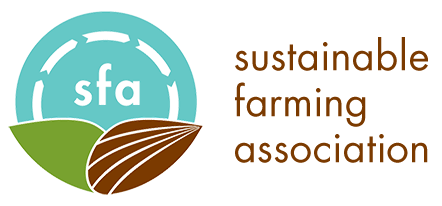Luhman: Dealing with Drought
 It is time for Minnesota livestock producers to get creative with how we are going to feed our cow herds through the winter. Below are a few things that we can consider.
It is time for Minnesota livestock producers to get creative with how we are going to feed our cow herds through the winter. Below are a few things that we can consider.
If you are a crop farmer who has never considered bringing livestock onto the farm, there are livestock producers who need your help. Grazing crop residue can be a value to your cropping enterprise, adding $20 or more per acre to the bottom line and drastically changing the game for a livestock producer in need of feed. If you have crop residue, cover crops, or extra pasture, consider posting on the Midwest Grazing Exchange. Livestock producers could also reach out to local farmers to discuss with them the option of grazing crop residue.
We often talk in regards to soil health that leaving hay residual is not “waste” but merely feeding biology. In years like this where feed is extremely expensive if you can find it at all, we may want to consider ways that we can maximize utilization of hay to get every bit of feed we can out of our money. If you unroll hay, unroll no more than can be consumed by your animals in a day or it will become bedding. When feeding just what they need and rolling it out in a way that gives all animals acces, the utilization can be quite high. If you have access to bale rings, this can be a way of increasing utilization as well!
Look around and determine what is available in your area as far as alternative feeds. Wheat straw or cornstalk bales, cull potatoes, distillers, sweet corn silage, etc… You might be surprised what you find when you begin looking for alternative feed sources. Be sure to consult with a professional about how each of these may affect the nutrition of the animal and what needs to be done to balance the ration.
If you depend on water from streams or ponds and this limited your ability to graze this year, perhaps installing water infrastructure would be advantageous in the future. Water infrastructure also allows us to be better grazing managers and have more adaptability in our operations. There are several funding options to assist with this, MDA offers funding assistance through their Livestock Investment Grant as well as the Agricultural Water Quality Certification Program, and NRCS has funding available through their EQIP program. Don’t let infrastructure be the reason you can’t manage your land in the best way possible!
There is not much more that we can do for this year, however, looking ahead we must consider how we can be more prepared for future droughts. Every farm with livestock should have a plan that lays out how to react during times of drought. It should have the inventory of animals laid out and clearly identify which animals leave first and at what time. This leaves less room for emotional reaction as we are just following the plan. I hope to offer more information on proper drought planning in future editions of Connect, but this is an opportunity for all of us who were caught off-guard, myself included, to learn and be better prepared in the future!
